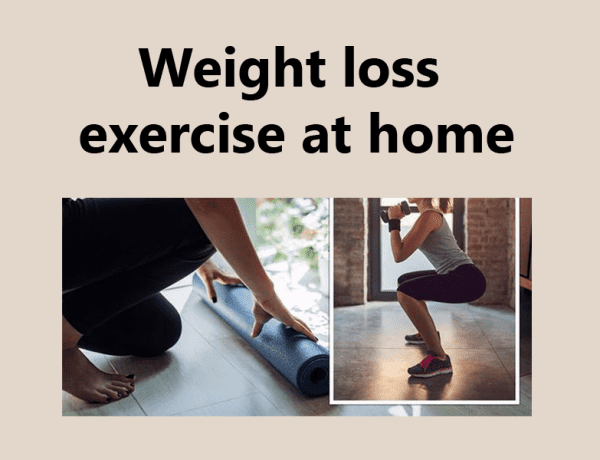In this article, We are going to help you to understand the Power yoga benefits and how to do it effectively with which you can lose a few Kgs or pounds without any weight training if you feel going to the gym every day is really a big task for you. We will also provide all the necessary information for beginners.
This article includes:
- What is power yoga?
- Why this for weight loss?
- Its Poses, and Benefits?
- How its different from other types of yoga
- Power yoga for Beginners
In the realm of physical fitness and holistic well-being, yoga stands as a timeless practice, revered for its ability to harmonize mind, body, and spirit. Among its diverse branches, it emerges as a dynamic and invigorating form, offering practitioners a pathway to strength, flexibility, and inner balance. Let’s delve into the essence of Power Yoga, its origins, principles, benefits, and how it continues to transform lives worldwide.
 Origins of Power Yoga:
Origins of Power Yoga:
Power Yoga, also known as “vinyasa” or “flow” yoga, traces its roots to traditional Ashtanga Yoga, a rigorous discipline developed by K. Pattabhi Jois. However, it was in the late 20th century that it gained prominence, spearheaded by influential teachers such as Bryan Kest and Beryl Bender Birch. This contemporary interpretation infused traditional yoga postures with dynamic sequences, creating a more intense and fluid practice.
Day by day this form of yoga is getting popular across the globe, especially among people who want the shred some extra pounds of body weight.
Principles of Power Yoga:
At its core, it emphasizes fluid movement synchronized with breath, fostering a seamless flow between poses. Unlike more static forms of yoga, it challenges practitioners to transition swiftly from one posture to another, enhancing cardiovascular endurance and muscular strength.
While sequences may vary, Power Yoga typically integrates a series of standing, seated, and balancing poses, interspersed with inversions and backbends. The practice encourages practitioners to cultivate mindfulness, anchoring attention to the present moment with each deliberate movement.
Benefits
The benefits of Power Yoga extend beyond the physical realm, encompassing mental clarity, emotional resilience, and spiritual growth. Through consistent practice, individuals can experience:
- Enhanced Strength and Flexibility: It targets major muscle groups, promoting lean muscle development and increased flexibility, contributing to overall functional fitness.
- Stress Reduction: The mindful approach to movement and breath regulation in it induces a state of relaxation, alleviating stress and anxiety.
- Improved Posture and Alignment: Practicing it cultivates awareness of body alignment, fostering better posture and reducing the risk of injuries.
- Increased Energy and Vitality: The invigorating nature of this form of Yoga revitalizes the body and mind, leaving practitioners feeling energized and rejuvenated.
- Mental Focus and Clarity: By synchronizing breath with movement, it enhances concentration and mental clarity, promoting a sense of inner balance and tranquility.
- Weight Management: The dynamic nature of it can elevate heart rate and calorie expenditure, supporting weight loss and maintenance goals.

Key differences between power yoga and other types of yoga?
Power yoga has gained significant popularity in recent years, offering a dynamic and physically demanding approach to the traditional practice of yoga. While it shares some common principles with other types of yoga, such as breath control and mindfulness, there are several key differences that set it apart. Here are some of the key distinctions between power yoga and other types of yoga:
- Intensity and Pace: One of the primary differences is its intensity and pace. Power yoga is typically faster-paced and more vigorous, focusing on building strength, flexibility, and stamina through a series of dynamic movements and flowing sequences. In contrast, traditional forms of yoga, such as Hatha or Iyengar, often involve slower movements and longer holds in static poses.
- Focus on Strength and Fitness: Power yoga places a strong emphasis on physical fitness and strength-building. While other types of yoga may prioritize relaxation and spiritual growth, it classes often incorporate elements of strength training, including bodyweight exercises like push-ups, squats, and lunges, as well as challenging poses that require significant muscle engagement, such as arm balances and inversions.
- Breath and Movement Synchronization: Like other forms of yoga, power yoga emphasizes the connection between breath and movement. However, in this synchronization is often more dynamic and vigorous, with practitioners coordinating their breath with each movement to create a flowing and rhythmic practice. This focus on breath control helps to enhance concentration, endurance, and mindfulness during challenging sequences.
- Variety of Sequences and Poses: Power yoga classes typically offer a diverse range of sequences and poses, allowing practitioners to experience a wide variety of movements and challenges. While traditional yoga styles may have a more structured sequence of poses, it classes often vary in their sequences, incorporating different poses and transitions to keep the practice engaging and dynamic.
- Adaptability and Accessibility: Despite its dynamic and challenging nature, power yoga can be adapted to suit practitioners of all levels and abilities. While some classes may be more intense and physically demanding, instructors often provide modifications and variations for different poses to accommodate beginners or those with specific physical limitations. This adaptability makes power yoga accessible to a wide range of individuals seeking to improve their strength, flexibility, and overall fitness.
Overall, power yoga offers a unique and invigorating approach to the practice of yoga, combining elements of strength, flexibility, and mindfulness to create a dynamic and empowering experience. While it may differ from traditional forms of yoga in its intensity and focus, power yoga remains rooted in the core principles of breath awareness, movement, and self-discovery, making it a valuable and rewarding practice for practitioners of all levels.

Incorporating Power Yoga into Your Routine:
Whether you’re a seasoned yogi or a newcomer to the practice, integrating Power Yoga into your fitness regimen can yield profound benefits. Here are some tips to get started:
- Start Slow: Begin with foundational poses and gradually increase the intensity and pace as you build strength and confidence.
- Listen to Your Body: Honor your body’s limitations and avoid pushing beyond your comfort zone to prevent injuries.
- Focus on Breath: Pay attention to the rhythm of your breath, using it as a guide to synchronize movement and cultivate mindfulness.
- Stay Present: Let go of distractions and immerse yourself fully in the practice, embracing each moment with openness and awareness.
- Seek Guidance: Consider attending Power Yoga classes led by experienced instructors who can provide guidance and alignment cues to optimize your practice.
Precautions To Take
If you are one of the guys who are physically fit and exercise regularly then this is best for you. But if you lie under any category which is mentioned below please consult a doctor. Read some best exercises for weight loss.
- If you are pregnant.
- If you had any recent surgery.
- If you had any muscle injury.
- If you have any chronic condition.
Conclusion:
Power Yoga embodies the essence of vitality, offering a dynamic pathway to physical fitness, mental clarity, and spiritual well-being. As practitioners harness the power of breath and movement, they embark on a transformative journey of self-discovery and empowerment. Whether on the mat or in daily life, the principles of Power Yoga resonate as a beacon of strength, resilience, and inner peace. Embrace the flow, embrace the power within.





























No Comments